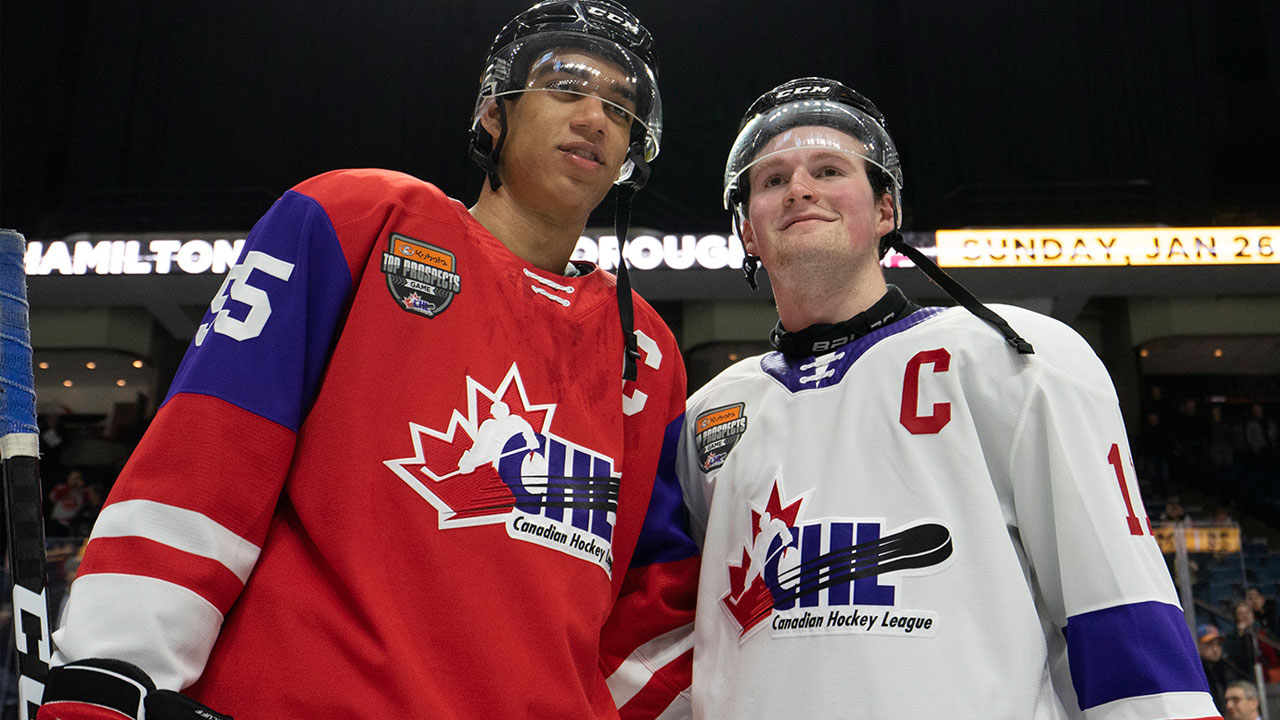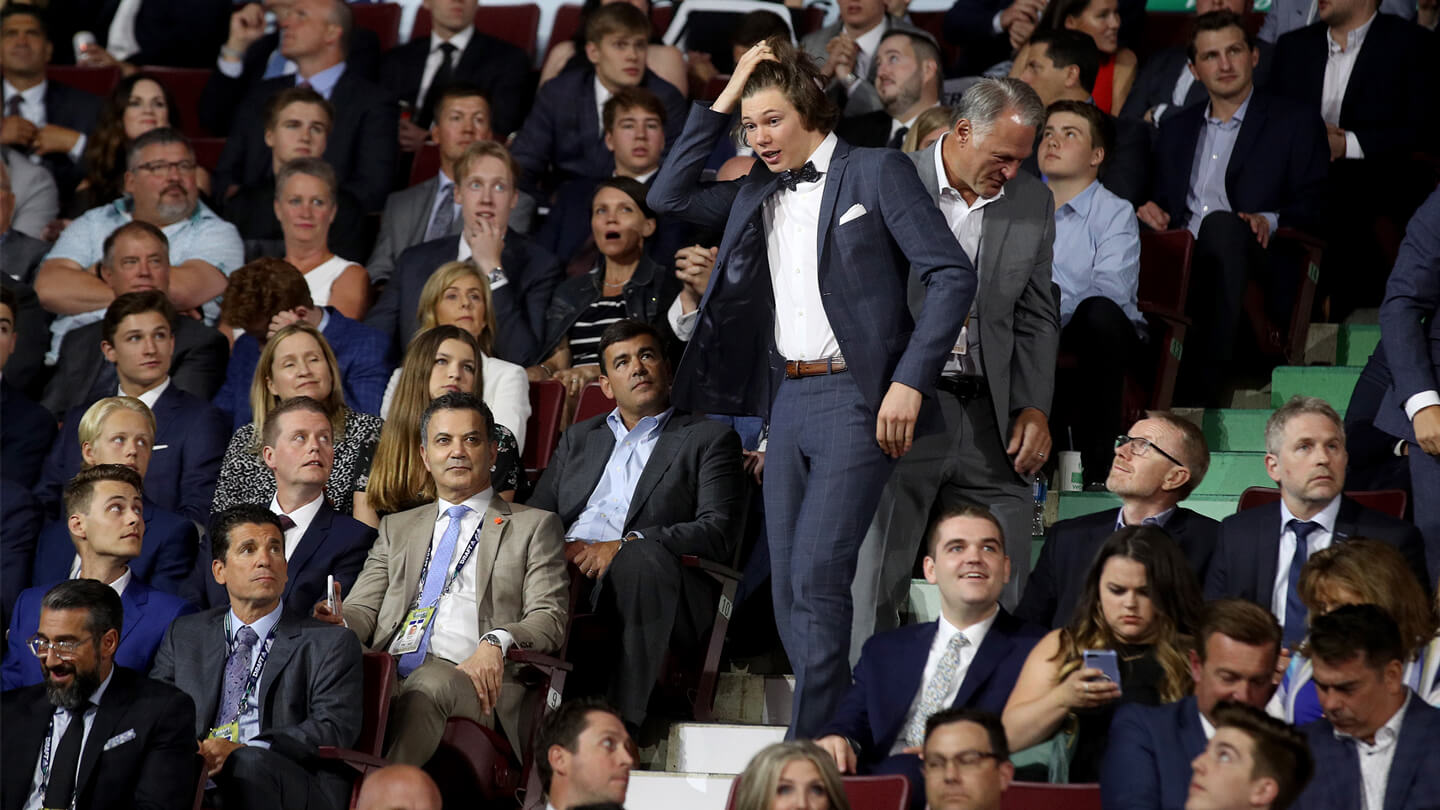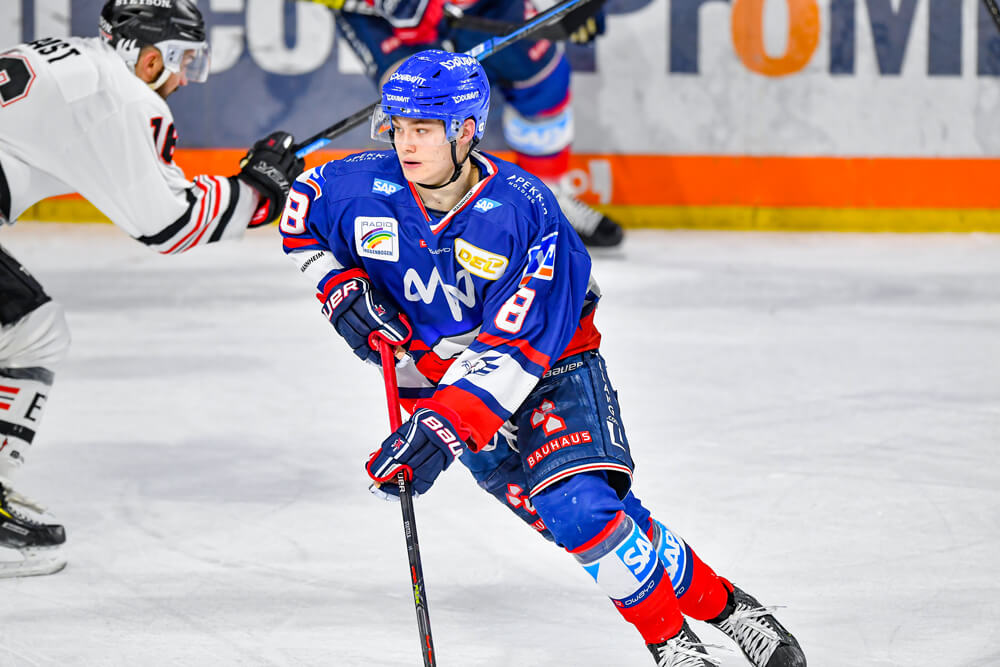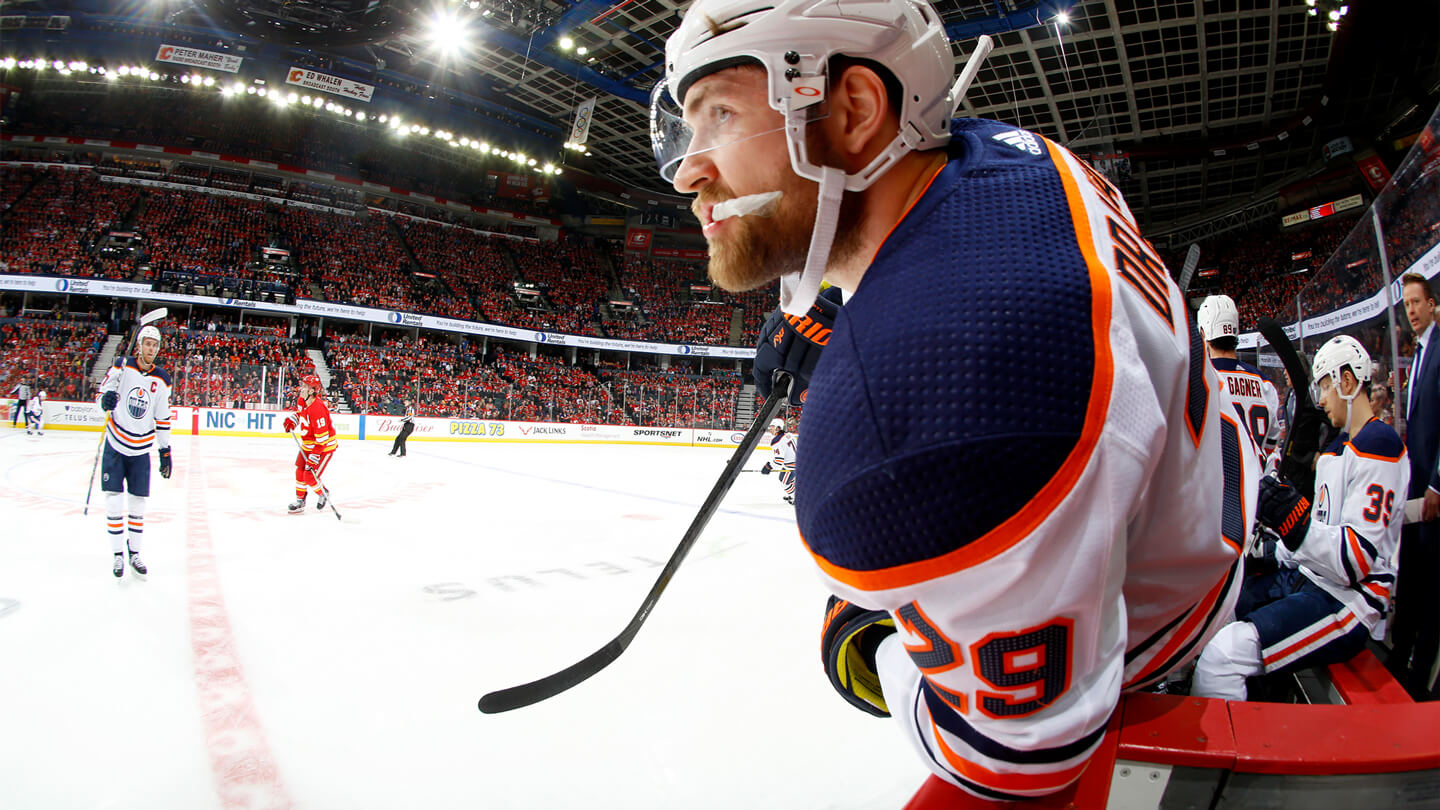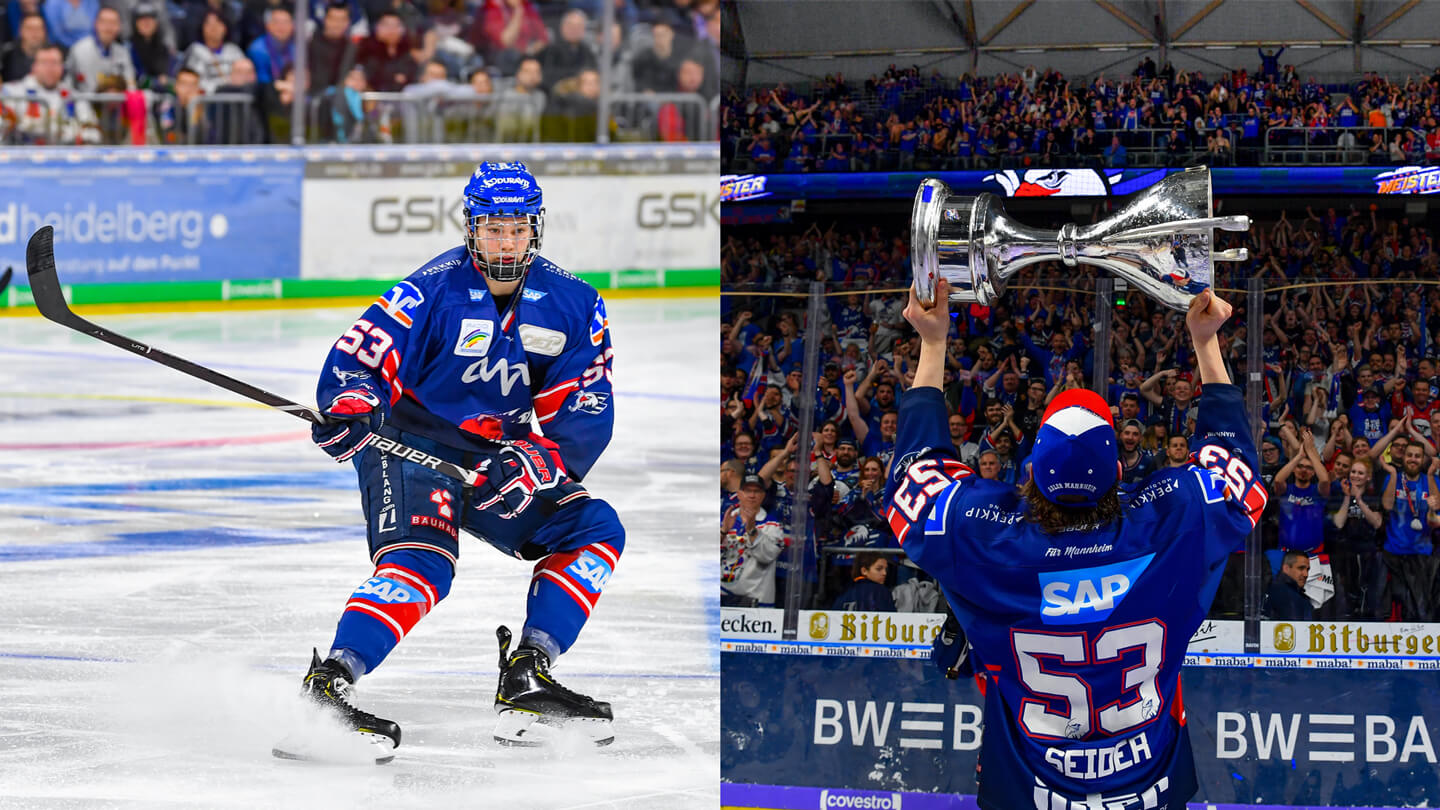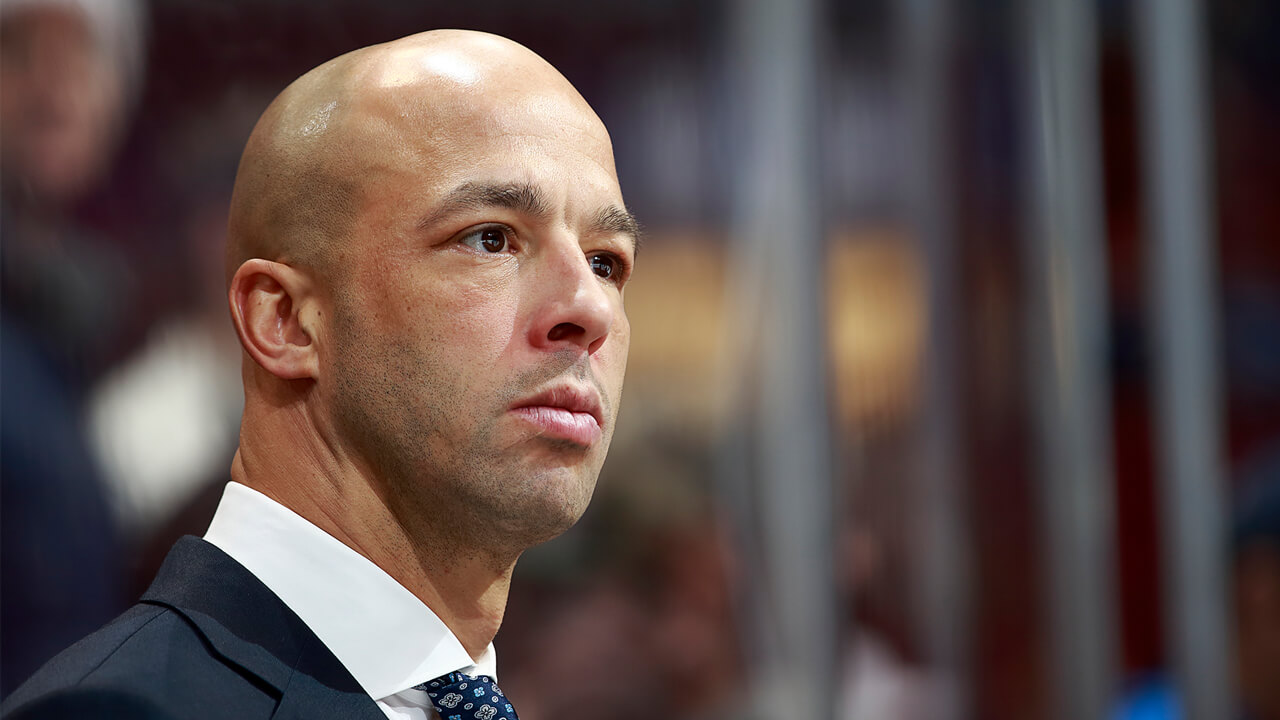As Steve Yzerman, the newly-minted Red Wings general manager, makes his way up to the stage with the rest of his Detroit contingent, Seider’s mother, Sabine, sitting just to his right, gives him a knock on the leg. “Hey Mo,” she says with a smile. “Get ready. You’re going to get picked.”
He laughs now remembering the moment. “I was like, ‘Okay mom, I know you’re excited, but please calm down,’” he says. “‘I’m freaking out anyways, I don’t need you freaking out next to me, too. Relax. Chill a little bit.’” Then Seider’s world got flipped on its head.
“With the sixth pick in the draft, the Detroit Red Wings select, from Mannheim of the DEL, Moritz Seider.”
The plot-twist quality of Yzerman’s choice isn’t lost on the room, an audible gasp fit for a silver-screen audience escaping the crowd. But no one’s more shocked than Seider himself, leaning forward, eyes wide, mouth agape. Sabine, maybe the only one not seated at Detroit’s draft-floor table who felt it would be his name called at No. 6, smiles on. After hugging her and his father, Kay, Seider takes a deep breath and enters the maelstrom.
It’s in the moments between hearing your name called and putting on that jersey for the first time that everything changes. It’s that walk down out of the stands and onto the draft floor, past the suits that decide big-league fates, up onto the NHL stage. Here, during this brief journey, teenagers become stars; fans and pundits doing their quick calculus on how the hockey landscape has been altered. And it’s here that Seider’s just become the highest-drafted German defenceman in NHL history, the third-highest drafted German player in all. For him, though, the line of thinking on that trek to the stage is less about the gravity of the moment and more about gravity in general. “The only thing I really remember was when I was walking down the stairs. I was like, ‘Okay, don’t do anything stupid. Don’t fall, don’t f— it up. Just go there, shake some hands, get a nice jersey, and have a big smile on your face.’”




